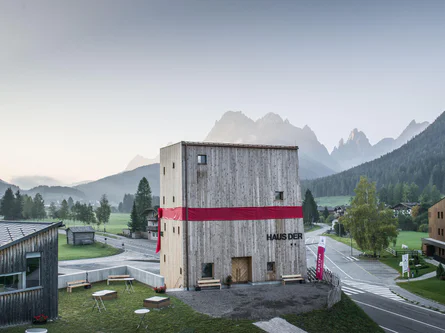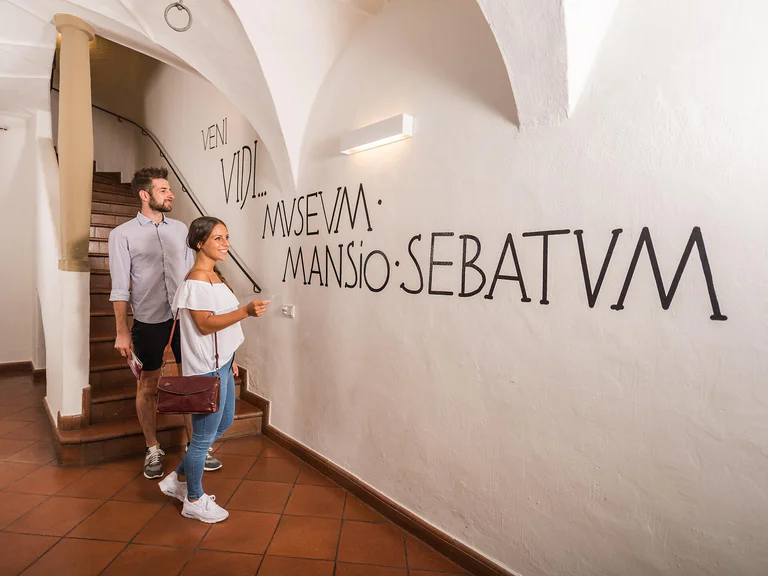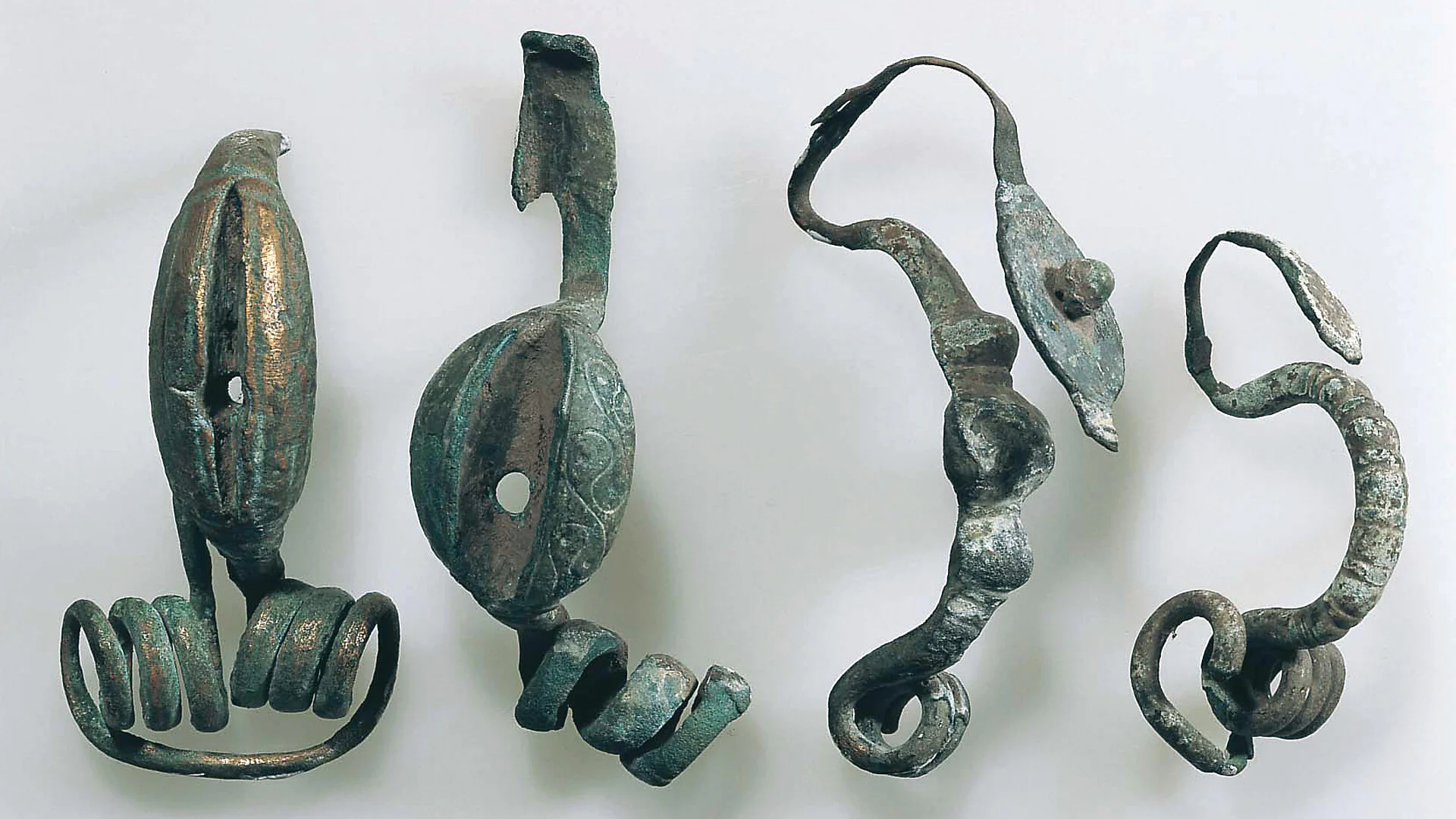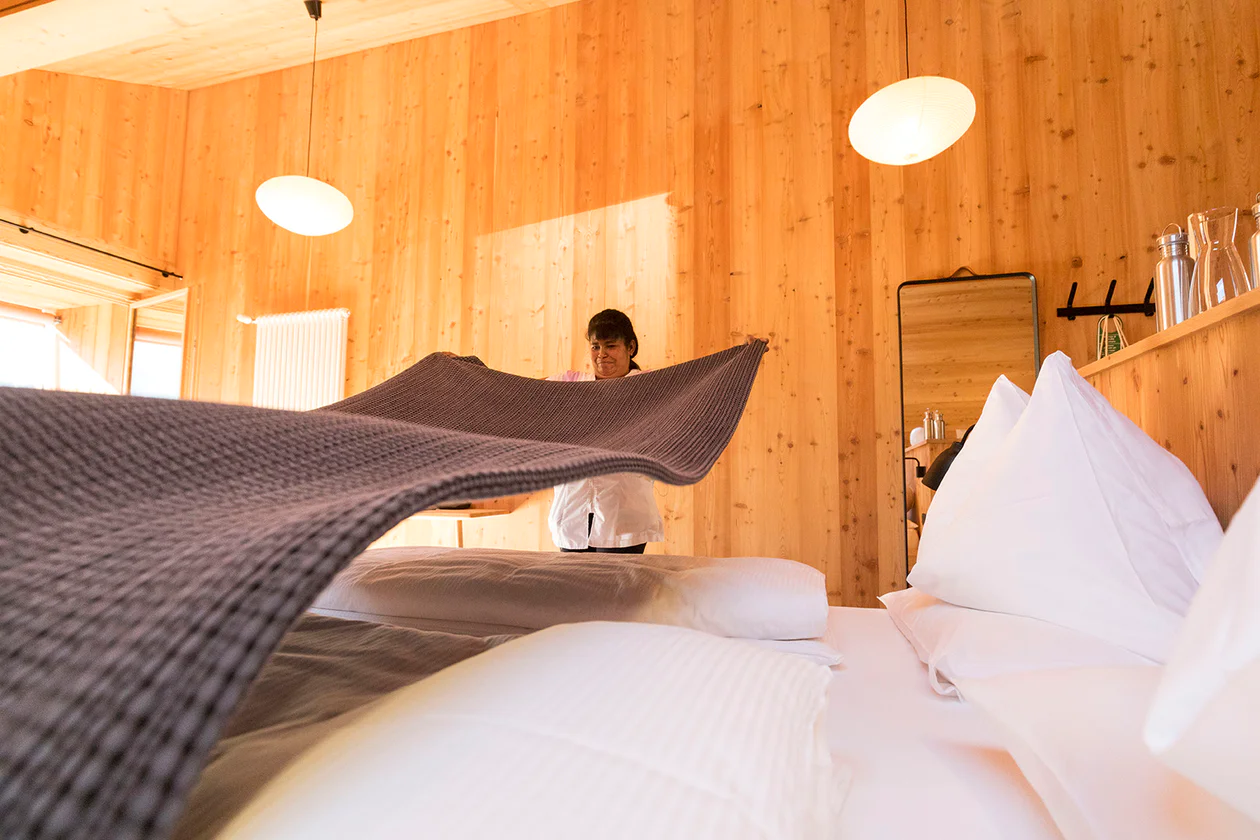Solid, central and welcoming, in this new and attractive visitor centre you will find information and emotions, fun and useful insights into the mountains and mountaineering, the Sexten/Sesto Dolomites, a UNESCO World Heritage Site, as well as the people and the history of Sexten/Sesto.
The building itself was built using sustainable wood, without glue, paint or plastic fixtures, but entirely from untreated larch and spruce wood that fell during the 2018 Vaja storm in the area around Nemesalm. The unusual form of the “Haus der Berge” was chosen as the winning design of a high-level architecture competition in 2015, and was finally built by the municipal administration in 2022 - as a long cherished desire of the people of Sexten/Sesto.
We are proud and excited about this extraordinary 'visiting card' of Sexten/Sesto. Please celebrate with us!

































































































































